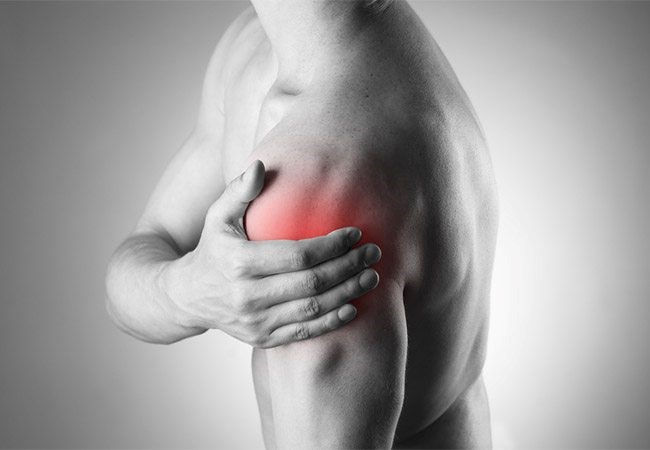Written by Claudio Pirrone, Myotherapist - In Stride Health Clinic

A strong shoulder is a good shoulder!
Humans as a species are (for lack of better terms) “designed” to move. How else would you justify having so many joints and muscles? This applies not only to lower limbs but also the upper body and the shoulder joint is no exception.
What is the shoulder?
Also known as the glenohumeral joint this “ball and socket” articulation is amongst one of the most mobile joints of our body and is formed by the union of the top portion of the Humerus bone (the ball) with part of the shoulder blade called the glenoid cavity (the socket).
Because the “socket” does not cover a great portion of the “ball” this joint has great mobility, but at a cost, named STABILITY. This issue is partially taken care of by strong and resilient tissues such the glenoid labrum and ligaments. These are “passive” tissues, and we have no power over making them better at what they do but we are certainly in control of ameliorate “active” or “dynamic” stabilizer of the shoulder such as muscles that attach and move the joint via their relative tendons.
What can I do about my shoulder pain or stiffness?
There’s a multitude of conditions that affect the shoulder and being assessed by your trusted physical therapist can help to fast track your return to optimal functionality since certain exercises may be specific for certain conditions. Nonetheless training your shoulder in internal and external rotation is a safe place to start!
As most of us have a resistance band at home, using that is a good option. We are training small muscles in isolation therefore I would suggest either a yellow or a red band and here’s how to do it:
- Tie the resistance band to a solid and stable object and stand up straight with your arms by your side
- Hold the other end of the band in your farther hand and bend your elbow to 90 degrees.
- Turn your forearm outwards, pulling against the resistance of the band.
- Keep your upper arm by your side.
- Make sure your body stays still and does not twist towards your arm.
- Control the movement as you bring your arm back in towards your tummy.
-This was EXTernal rotation of one shoulder. Try 12 repetitions of these then pass the band to the other hand to do INTernal rotation of the other shoulder. Once you are done, turn around facing the back of your room and repeat the process.
Complete 2 to 3 sets a day, 2 to 3 times a week having at least a day of rest in between sessions so that your shoulder can grow stronger!
See you myotherapist!
If you experience shoulder pain or stiffness, a myotherapist can offer a range of hands on treatments and aid your rehabilitation through stretches and exercises. Our myotherapists can also work with our physiotherapists as required to reduce pain, improve movement and prevent recurrence of pain and injury.
In Stride Health Clinic boasts an onsite rehabilitation gym and clinical pilates studio that our myotherapists and physiotherapists use to support your rehab.
Claudio offers four sessions sessions for clinical myotherapy bookings each week (Tuesdays, Wednesdays, Thursday evenings and Saturday mornings). He aims to identify strategies and overcome barriers to ensure prompt recovery, no matter what challenges may arise. During a consultation with Claudio, he will always start with a detailed history to guide the assessment of the complaint and the creation of a plan. The session may include a combination of exercise-based interventions and manual therapy techniques, such as deep tissue massage, fire cupping, dry needling, and joint mobilization.
Claudio is available Tuesdays, Wednesdays, Thursdays & Saturdays. You can book an appointment online or by calling the clinic on 9372 8091



Comments